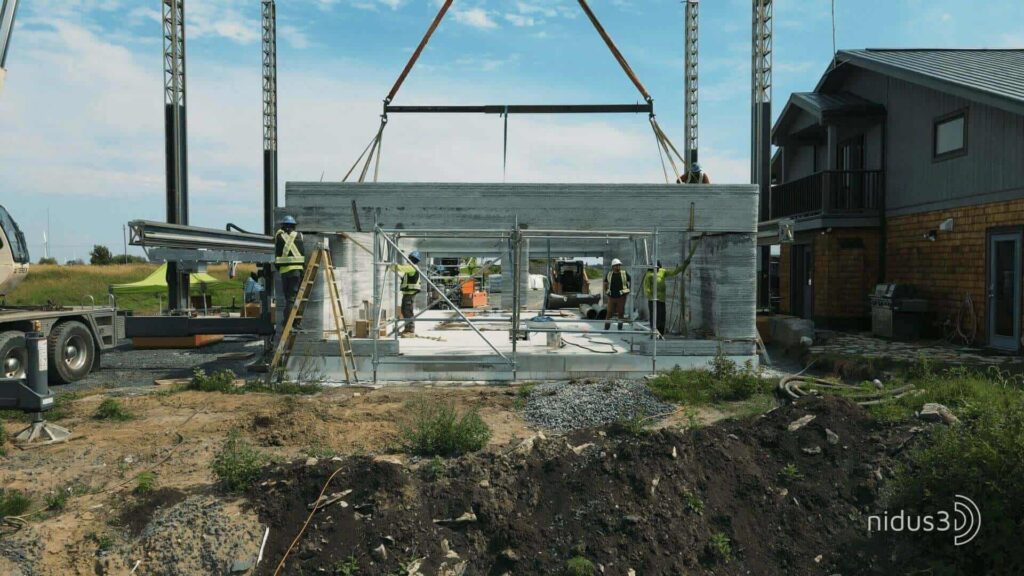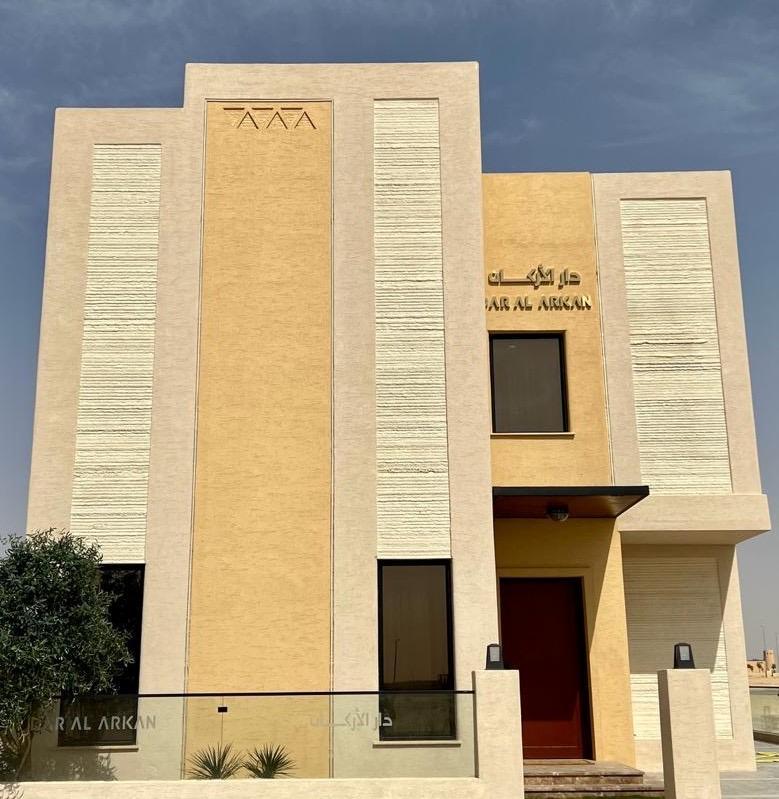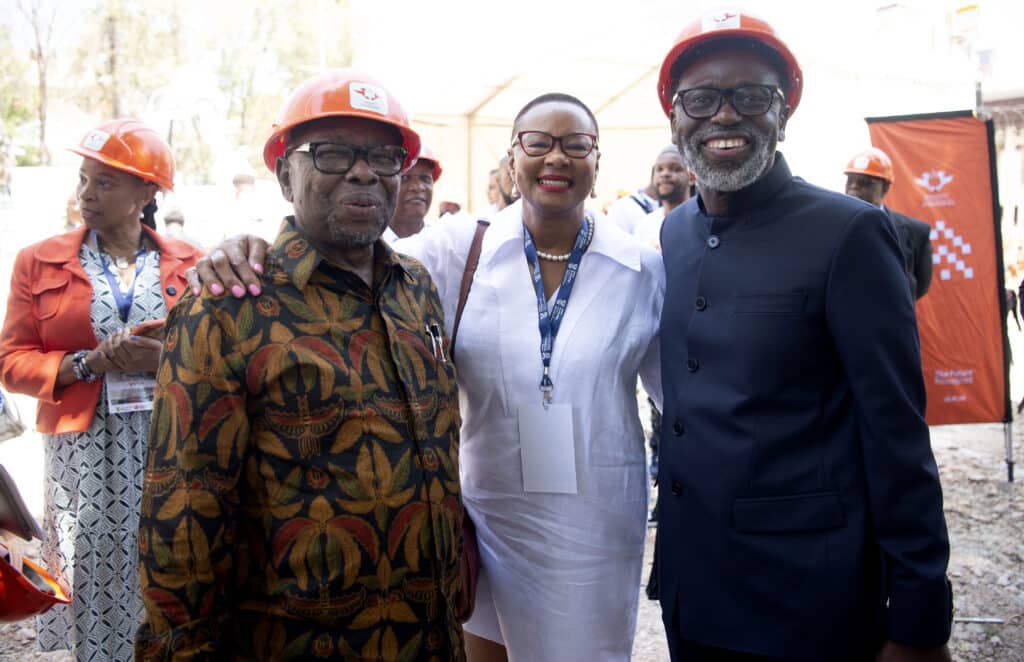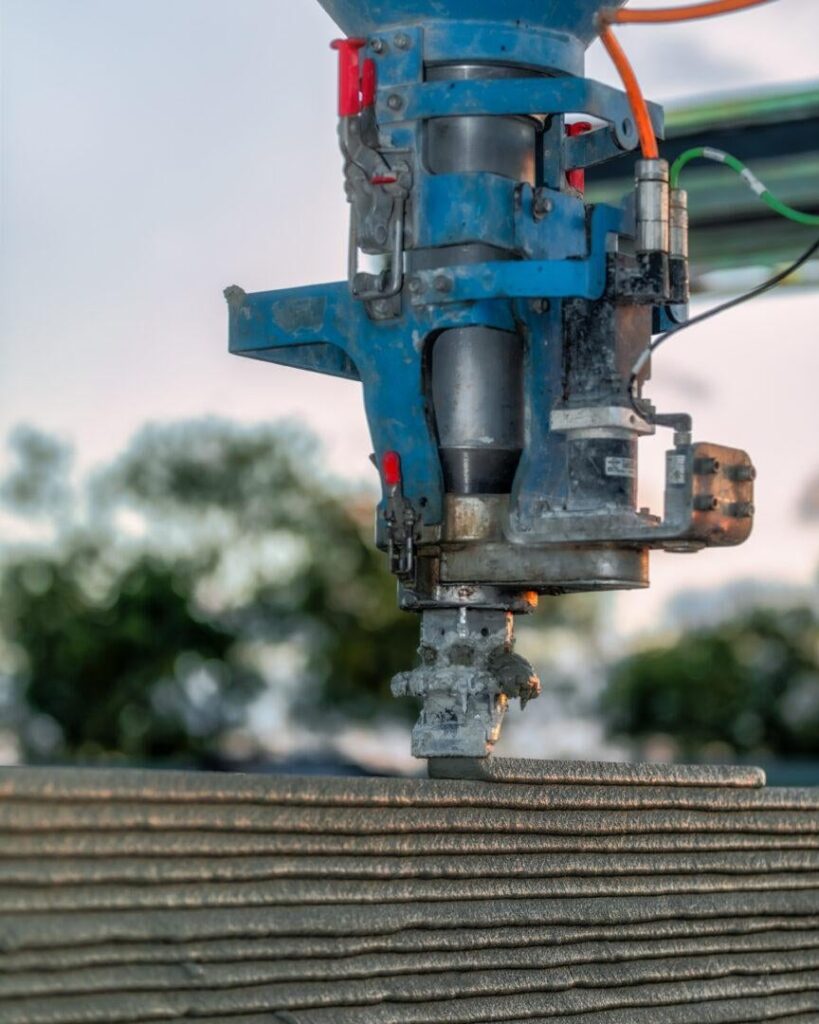Orascom and COBOD bring 3DCP to Egypt

The partnership, owned 76% by Orascom Construction and 24% by COBOD, will play a leading role in the technological advancement of the construction sector in Egypt. Not only is this new technology more cost and time efficient compared to traditional methods of construction, but it is also more environmentally sustainable as it reduces material consumption, […]
Zoom On The Tallest 3D Printed Building COBOD International

The world’s tallest 3D printed building is now complete and it is in many ways impressive. The 3-story, 9,9 m tall building compromises 345 m2/3713,55 ft2 and was made by the leading Saudi Arabian real estate developer, Dar Al Arkan, using a COBOD 3D construction printer. The villa features several smart home features and the […]
Open-Air Kenyan Holiday Homes
Italian design studio PAT works together with fellow architect Ferdinando Fagnola on the Falcon House renovation project that is located on Kenya’s Manda Island. The holiday home is defined by open-air bedrooms and terraces that are raised to overlook the lush surroundings over the treetops. The self-sufficient building provides its water and electricity with passive […]
South Africa’s first 3D printed building

First South African printed buildingAt the start of this year, the University of Johannesburg (UJ) made history by finishing South Africa’s first-ever 3D printed building. The project was a collaboration between UJ’s Department of Architecture and Design, and the Department of Science and Innovation (DSI). The building, which is a one-room structure, was completed in under eight hours using 3D printing technology on UJ’s Doornfontein campus. The process employed a CyBe Robot Crawler, which used a cement-based material to create the walls of the building layer by layer. The printer was operated by a team of experts, including outgoing UJ Vice-Chancellor and Principal Professor Tshilidzi Marwala, who ensured that the printing process was smooth and accurate. The experts were really impressed with the printer’s construction time, as it can produce buildings much faster than traditional construction methods. “This is among the last projects that will be rolled out during my tenure as Vice-Chancellor of this University, and it is one I am particularly excited about!”, said Prof. Marwala at the launch event at UJ’s Doornfontein Campus.
Quick and cheap production
Apart from the production speed of 3D concrete printing, the relatively low costs of the technique also had an impact on the university’s staff. Professor Jeffrey Mahachi, head of the Civil Engineering & The Built Environment School at UJ, was dazzled by how cheap it was to print the project. “The interesting thing is you can print a house in 8 hours, the quality is excellent, and the product is cost-effective,” Mahachi noted about the structure. In that statement he was more than right, as the entire house was built within the span of a day, much faster than traditional construction. Furthermore, the production speed and costs could very well improve in the future. Dr. Khululekani Ntakana, lecturer at UJ, correctly mentioned that the technology is still in its infant stages, and that research is still being conducted every day. It is uncertain what the future holds for 3D concrete printing, but with UJ joining the worldwide research on the construction technique, the future sure looks promising!
An improvement to South African construction
The completion of the 3D printed building is a significant milestone for the South African construction industry. It demonstrates that 3D printing technology can be used to build structures quickly and efficiently. As this innovative technology is so efficient, the UJ project is expected to pave the way for future developments in the construction industry. The use of 3D printing technology in construction could lead to faster construction times, reduced costs, and improved quality. Due to all these advantages, the technology has the potential to address the housing shortage in South Africa by providing affordable and sustainable housing solutions. As Dr Blade Nzimande said, the country currently faces a shortage of over 2.3 million houses. The backlog of affordable housing has been going on for over two decades, and local experts on the subject are excited that 3D printing technology could offer a possible solution to this problem.
Worldwide experience
As CyBe Construction is getting ready for its 10 year anniversary, its track record of worldwide projects has grown to look very promising. Since being founded in the legacy of Hendriks Construction, a 100-year-old industry leader, CyBe has had partners all around the world. Time after time, the company has proven to be able to offer faster, cheaper, and more sustainable construction solutions. The company’s collaboration with Johannesburg, therefore, marks a significant milestone for South Africa’s construction industry. The completion of the country’s first 3D printed building demonstrates the potential of 3D printing technology in providing quick, efficient, cost-effective, and high-quality building solutions. The use of this technology could help address the critical issue of housing shortage in the country, providing affordable and sustainable housing solutions. As CyBe’s CEO and founder, Berry Hendriks, and the company share a vision for an improved society, the company is happy to be able to lend a hand in solving this crisis. With the completion of the first 3D printed building and the ongoing research in the field, the future looks promising for the construction industry in South Africa.
CyBe and SAHIF to tackle South African housing crisis

20/06/2023: CyBe Construction, a leading provider of 3D concrete printers, and the South African Housing & Infrastructure Fund (SAHIF) have joined forces in a groundbreaking collaboration aimed at tackling the pressing housing shortage in South Africa. The joint effort will leverage innovative 3D concrete printing technology to deliver faster, cheaper, and more sustainable homes. This strategic cooperation comes in response to the urgent need for affordable housing and represents a significant step toward achieving the United Nations’ goal of providing safe and accessible housing for all by 2030.
South Africa’s Critical Housing Crisis
South Africa is currently facing a severe housing crisis, with an ever-increasing backlog that has persisted for years. According to Dr. Blade Nzimande, Minister of Higher Education, Science and Technology, the country currently faces a shortage of over 2.3 million houses. This backlog of affordable housing has now reached the dark milestone of persisting for over two decades, highlighting the urgent need for affordable housing solutions. Though the government is making significant progress in the provision of homes in the country, the demand for housing keeps rising every day. Unfortunately, the country’s housing crisis isn’t unique. Indonesia, for example, currently faces a shortage of over 10 million homes. Mexico needs to scale up its housing construction to 800,000 units a year to keep up with demand. India is estimated to have a housing shortage of over 38 million by 2030. It is evident that something needs to be done.
Building the Future Together
To address this critical issue, CyBe Construction (CyBe.eu) and SAHIF (sahiffund.co.za) have signed a Memorandum of Understanding (MoU), combining their expertise and resources to come to a solution. This solution can be accredited to an alternative building method to substitute conventional construction: 3D concrete printing (3DCP). 3DCP has the ability to deliver homes quicker, cheaper, and more sustainable. “We believe that construction 3D printing will significantly alter and positively disrupt how human settlements will be delivered in South Africa,” said Minister Nzimande during a demonstration of the technology by the University of Johannesburg (UJ). The university’s demonstration showcased the capabilities of the CyBe Robot Crawler: a mobile 3D printer capable of efficiently constructing homes within hours. This printer is a product of CyBe Construction, the provider of 3D printing software and hardware in the MoU issued to solve the South-African housing crisis. As a market-leading 3D concrete printer company with a decade of experience, the company has demonstrated time after time being able to offer faster, cheaper, and more sustainable construction solutions. Their demonstration at UJ reaffirmed their expertise once again, making them the ideal candidate for the cooperation with SAHIF. The South African Housing and Infrastructure Fund (SAHIF) specializes in the development and application of sustainable materials and innovative technologies in the construction sector. SAHIF is the first fund in South Africa to embrace 3DCP in their approach. The collaboration between the two sustainable innovators, planning on rolling out large-scale development projects around the country, is poised to transform South Africa’s construction industry.
Turning Adversity into Progress
Though the collaboration between Cybe and SAHIF was being planned and prepared for some time now, the inauguration of the MoU still had a rather coercive trigger. The occurrence that lifted the agreement of the ground was a recent earthquake in South Africa. The seismic event, of which the epicenter is believed to be in Johannesburg’s neighboring city Boksburg, caused extensive damage to buildings in a large scale around the city. The earthquake served as the final push for the initiation of the MoU. SAHIF’s CEO, Rali Mampeule, emphasized the pressing need for affordable but resilient housing by stressing that “not only are 3D printed houses more affordable and quicker to build, but we also know they are sturdy enough to withstand seismic forces that took us by surprise this week.”
Earthquake-Proof Structures with 3D Printing
The adoption of 3D concrete printing technology provides a groundbreaking solution for constructing earthquake-resistant houses in South Africa. The inherent flexibility of 3DCP allows for the customization of structures, specifically tailored to withstand seismic activity. The technique also allows for the creation of intricate shapes that are reinforced with earthquake-resistant materials such as steel or polymer. The key factor in the method’s ability to absorb the seismic energy of an earthquake, however, can be attributed to CyBe Construction’s building material. The company has developed its own CyBe Mortar, an earthquake-proof mortar specifically formulated for 3D printing. This material combines high-strength aggregates and fibers, significantly bolstering its resistance to seismic forces. With superior durability and flexibility, this material stands out as an ideal option for constructing earthquake-proof houses. Additionally, its reduction of CO2 emissions by 32% as compared to traditional cement-based mortars promotes sustainability in the construction industry. This earthquake-resistant material, when combined with the precision, efficiency, and flexibility of 3D concrete printing, creates homes that not only prioritize safety but also showcase sustainability and style.
Fast, Affordable, and Sustainable Construction
The benefits of 3D concrete printing extend far beyond earthquake-proofing. The technique enables faster, cheaper, and more sustainable construction, making it an ideal solution for addressing the housing shortage in South Africa. The method almost entirely automates construction, resulting in significant time and labor hour savings. It also ensures optimal material usage, meaning less waste and lower material costs. This lower waste, along with the use of eco-friendly materials, contributes to more sustainable construction practices. CyBe Construction brings over ten years of experience in 3D concrete printing, offering a wealth of expertise and know-how in this cost-effective, efficient, and sustainable construction method. This makes them the perfect entity to work together with SAHIF. Combining SAHIF’s proficiency in South African construction and CyBe Construction’s competence in 3D concrete printing, the parties are well-equipped to address the pressing housing crisis in the country.
A Blueprint for Housing Success
The collaboration between CyBe Construction and SAHIF represents a significant milestone in addressing South Africa’s housing shortage. The transformative power of 3D concrete printing technology, with its ability to deliver faster, cheaper, and more sustainable homes, holds immense promise for the construction industry. As the urgent need for affordable housing is not bound to South Africa, as demonstrated by the housing backlogs in countries like Indonesia, Mexico, and India, the cooperation is poised to revolutionize the way homes are built not only in South Africa but also worldwide. With its proven effectiveness, 3D concrete printing can offer a scalable and efficient solution to this pressing global challenge, and the collaboration between CyBe and SAHIF can be seen as a precedent for solving the global housing crisis. By combining innovation, expertise, and a shared vision, CyBe Construction and the South African Housing and Infrastructure Fund are leading the way towards a future where safe, accessible, and sustainable housing is within reach for all.
10 houses 3D printed in 10 weeks

From Oct. 2022 to Jan. 2023, 14Trees 3D printed 10 houses in Kilifi, Kenya, averaging one house per week 6 three-bedrooms (76 m2 / 836 SF) and 4 two-bedrooms (56 m2 / 616 SF) houses have been 3D printed so far, making Mvule Gardens in Kilifi the largest 3D printed project to date No other […]